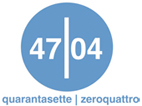It’s September 16, 1947.
It’s the day that marks a new beginning. It’s the day when the new border line, the line that crosses through the Gorizia territory dividing it between Italy and Yugoslavia, is physically marked on the ground.
Wooden posts, long lines of white chalk, barbed wire. The so-called “ethnic line,” approved by the Allied forces on February 10 in Paris, becomes reality.
The Anglo-American forces are demobilizing and preparing for the handover. There is joy, enthusiasm, with many people celebrating in the streets.
But there is also worry, anguish, anxiety, for a future that is yet to be built and largely unknown. A future in which many families will be forced to separate, each taking their own path.
A single screen, divided in two.
Crossed by a white line. One side here, and the other over there. It’s 1947.
These are the weeks when the new border is decided and traced.
Archive footage tells us two perspectives, the Italian and the Yugoslavian: propaganda narratives that are meant to appear positive, enthusiastic, but at the same time, they reveal the conflicting sentiments within the population. Accompanied by music that emerges from a contemporary reinterpretation of the soundtracks from those very films, the visitor immerses themselves in the decisive days when the new border is born, in the rhetoric that marks public speeches (as evidenced by the captions), in the emotions preserved in the faces and gestures of the people of Gorizia.

